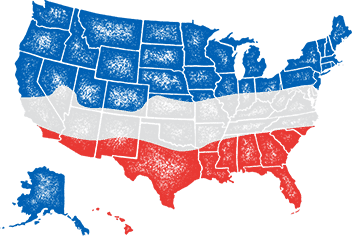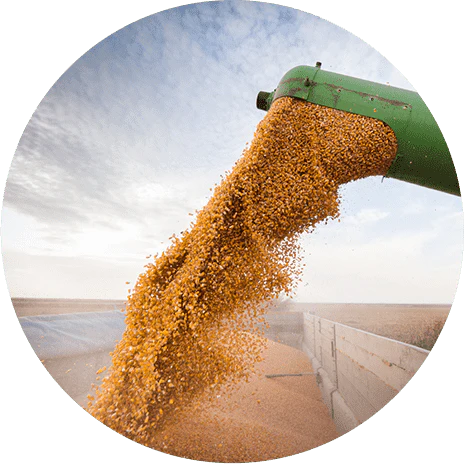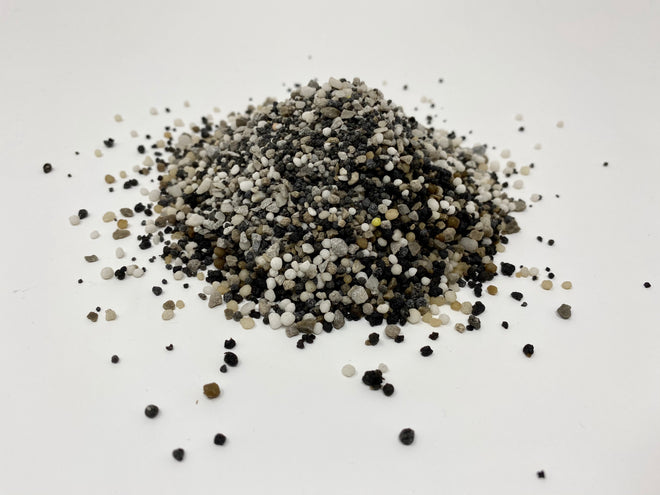
- When to plant:
- Fall, Winter
- Fertilizer:
- Hancock's 16-04-08 Lawn & Pasture Fertilizer
- Seeding rate:
- 1-2 lbs. per 1,000 sq. ft. or 50-100 lbs. per acre
- Overseeding rate:
- 1 lb. per 1,000 sq. ft. or 50 lbs. per acre
- Seeding depth:
- 1/4 inch
- Ideal ph:
- 5.0 - 8.0
- Gmo:
- No
- Inoculant needed:
- No
- Coated or raw:
- Raw
- Lifecycle:
- Annual
- Climate zones:
- Cool Season, Transition Zone, Warm Season
Hancock's Pasture Ryegrass is a medium maturity, westerwold type, tetraploid annual ryegrass. It was selected for fast establishment, along with balanced production through the growing season. Hancock's Pasture Ryegrass Seed outperformed the most commonly used varieties in many trials across the southern United States.
Product Information
- Application or Use: Lawn, Pasture, Cattle Forage, Livestock Grazing, Cover Crop, Erosion Control
- Germination Time: 5 - 7 days, under optimal conditions
- Growing Locations: Warm Season, Transition Zone, Cool Season
- Height: Lawn - 1 - 3 inches - Pasture - 6 - 8 inches
- Sunlight Requirements: 4+ hours, full sun for best results
- Advantages: Provides forage and soil stability in the winter and dies back in the spring, allowing your warm-season grasses to flourish.
- When to Plant: Recommended planting time is fall and winter when night time temperatures are consistently below 65 degrees.
Hancock's Pasture Ryegrass went through a rigorous selection process in both the southeast and Oregon. Disease resistance and yield were the primary focus of the selection process. In Florida, the focus was resistance to crown rust (puccinia coronata) and vigorous post-harvest regrowth. Selection criteria in Oregon was resistance to stem rust (puccinia graminis), tiller density, forage and seed yield potential.
Hancock's Pasture Ryegrass has good resistance to crown rust and a vigorous regrowth after harvest. Hancock's Pasture Ryegrass is extremely high yielding in early cuts, an excellent choice for fast-establishing, short-term grazing, and green chop production. This blend also has an improved cold tolerance over other tetraploid varieties. It can be sown alone or in combination with fall-sown forage cereals and annual clovers. Hancock's Pasture Ryegrass is our no. 1 choice for providing a cost-effective, high-quality forage for livestock.
Ryegrass is a cool season variety, plant once nighttime temperatures are consistently 65 degrees and below.
*Product packaging may appear different than what is pictured.
Remove all old vegetation to prepare a clean seedbed. Drag the area to both loosen and level any hard or uneven spots if needed. Apply a slow-release starter fertilizer at the recommended rate. Fertilize your pasture three times a year for best results.
Broadcast seed at recommended rate. Drag or roll lightly to cover the seed, no more than 1/4 in. below surface. If you are overseeding an existing pasture, it is essential to mow existing grass low and incorporate seed 1/4 in. into the soil for best results. Apply irrigation for approximately 30 minutes every evening until soil is damp, and germination has occurred.
Ryegrass is a cool season variety, plant once nighttime temperatures are consistently 65 degrees and below.
When choosing to start a new lawn, remove old vegetation by using a de-thatcher, power rake or tiller to kill the existing vegetation. Rake or drag the area to remove debris and dead grass for a clean area. Ensure the soil is leveled and loosened to allow the seed to have good soil contact once spread on a clean seed bed.
If you have an area with heavy weed coverage, we recommend starting fresh by killing and removing the existing vegetation. If you choose to use chemicals, herbicides or fertilizers, you must check with the product's manufacturer prior to planting new seed to ensure the proper waiting period.
When overseeding an existing area, mow your lawn at the lowest setting and bag the clippingsx. Rake or drag any areas that have dead thatch or debris.

Seed Quality
Hancock Seed is dedicated to delivering the best seeds possible to our customers. Hancock Seed grows and harvests many of our products, and we acquire the majority of the rest from other family farmers.
All these seeds are processed, packaged and shipped from Hancock Farm. This helps us ensure that our high standards are met. Unlike much of the competition, we refuse to sell you a seed that was not gathered during the last harvest. You will always receive fresh product from Hancock.
Every seed we grow comes with 40 years of experience behind it...you can rest assured that all of our products are cultivated in a method that assures its potential for growth.

Your cart ( 0 )

Hancock's Pasture Ryegrass is a medium maturity, westerwold type, tetraploid annual ryegrass. It was selected for fast establishment, along with balanced production through the growing season. Hancock's Pasture Ryegrass Seed outperformed the most commonly used varieties in many trials across the southern United States.
Product Information
- Application or Use: Lawn, Pasture, Cattle Forage, Livestock Grazing, Cover Crop, Erosion Control
- Germination Time: 5 - 7 days, under optimal conditions
- Growing Locations: Warm Season, Transition Zone, Cool Season
- Height: Lawn - 1 - 3 inches - Pasture - 6 - 8 inches
- Sunlight Requirements: 4+ hours, full sun for best results
- Advantages: Provides forage and soil stability in the winter and dies back in the spring, allowing your warm-season grasses to flourish.
- When to Plant: Recommended planting time is fall and winter when night time temperatures are consistently below 65 degrees.
Hancock's Pasture Ryegrass went through a rigorous selection process in both the southeast and Oregon. Disease resistance and yield were the primary focus of the selection process. In Florida, the focus was resistance to crown rust (puccinia coronata) and vigorous post-harvest regrowth. Selection criteria in Oregon was resistance to stem rust (puccinia graminis), tiller density, forage and seed yield potential.
Hancock's Pasture Ryegrass has good resistance to crown rust and a vigorous regrowth after harvest. Hancock's Pasture Ryegrass is extremely high yielding in early cuts, an excellent choice for fast-establishing, short-term grazing, and green chop production. This blend also has an improved cold tolerance over other tetraploid varieties. It can be sown alone or in combination with fall-sown forage cereals and annual clovers. Hancock's Pasture Ryegrass is our no. 1 choice for providing a cost-effective, high-quality forage for livestock.
Ryegrass is a cool season variety, plant once nighttime temperatures are consistently 65 degrees and below.
*Product packaging may appear different than what is pictured.
Remove all old vegetation to prepare a clean seedbed. Drag the area to both loosen and level any hard or uneven spots if needed. Apply a slow-release starter fertilizer at the recommended rate. Fertilize your pasture three times a year for best results.
Broadcast seed at recommended rate. Drag or roll lightly to cover the seed, no more than 1/4 in. below surface. If you are overseeding an existing pasture, it is essential to mow existing grass low and incorporate seed 1/4 in. into the soil for best results. Apply irrigation for approximately 30 minutes every evening until soil is damp, and germination has occurred.
Ryegrass is a cool season variety, plant once nighttime temperatures are consistently 65 degrees and below.
Instructions
When choosing to start a new lawn, remove old vegetation by using a de-thatcher, power rake or tiller to kill the existing vegetation. Rake or drag the area to remove debris and dead grass for a clean area. Ensure the soil is leveled and loosened to allow the seed to have good soil contact once spread on a clean seed bed.
If you have an area with heavy weed coverage, we recommend starting fresh by killing and removing the existing vegetation. If you choose to use chemicals, herbicides or fertilizers, you must check with the product's manufacturer prior to planting new seed to ensure the proper waiting period.
When overseeding an existing area, mow your lawn at the lowest setting and bag the clippingsx. Rake or drag any areas that have dead thatch or debris.

























